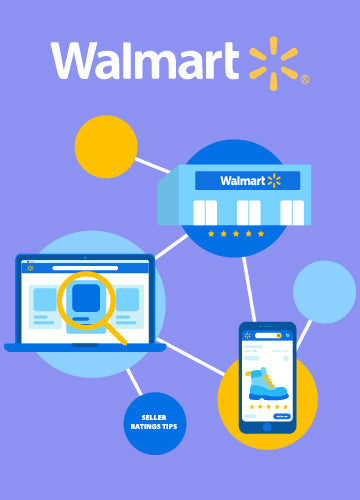Highlights
- MAP sets the lowest price retailers can advertise, but not necessarily the lowest sale price.
- MAP pricing protects brand integrity, prevents price erosion, supports fair competition, and ensures consistent pricing across sales channels.
- MAP pricing is legal in the U.S., though regulations vary by state. It’s illegal in the EU and UK.
- Enforcing MAP includes setting clear policies, using monitoring software, and regularly reviewing to ensure compliance.
Staying on top of Minimum Advertised Pricing (MAP) policies is a critical challenge for brands and manufacturers.

But what is MAP in pricing, and why does it matter so much? In today's eCommerce world, understanding MAP policies is more important than ever. Competition, a cornerstone of eCommerce and traditional commerce, drives prices down and protects consumers. But how does competition intersect with MAP pricing? The connection might surprise you.
In this article, we'll discuss what is MAP pricing, how it affects competition, and why it’s a crucial aspect of retail strategy for many brands.
What is MAP Pricing Mean?
MAP stands for Minimum Advertised Price. It is a policy set by the manufacturer or brand that stipulates the lowest price at which a retailer can advertise a product.
It’s important to note that this is not the lowest price for the retailer to sell the product. It only applies to the advertised price shown online or in advertisements.
What is MAP Pricing Policy?
A MAP pricing policy is an agreement between a brand and its retailers that sets the minimum price to advertise a product. Retailers must agree to this policy before they are allowed to sell the brand's products.
The definition of "advertising" can vary by supplier. Generally, it refers to off-site advertisements, meaning retailers can advertise at the MAP price to attract customers to their website.
Some brands may allow exceptions to the MAP policy, such as offering discounts to specific groups like military service members or during certain seasons like Black Friday.
Why is MAP Pricing Important?

MAP violation isn’t acceptable. It is crucial in maintaining a brand's integrity and supporting retailers. Here are the key benefits:
Brand Security
MAP policies help prevent price erosion, which occurs when retailers heavily discount products, forcing others to lower their prices. This downward spiral can diminish the perceived value of a brand.
Retailer Support Across Sales Channels
Now, let’s understand what is MAP pricing in retail and how it benefits retailers.
By setting a minimum advertised price, MAP policies protect retailers from being undercut by competitors, which can reduce their profit margins. It also discourages predatory pricing strategies. Thus, it ensures a fair market where no retailer gains an unfair advantage by severely lowering prices.
Consistent Pricing for Customers
Consistent advertised pricing across different platforms enhances the customer experience. It prevents situations where a customer feels frustrated after purchasing a product at a higher price only to see it advertised at a much lower price elsewhere.
Is MAP Pricing Legal in the US?
Yes, MAP pricing is legal in the US under Federal Antitrust Law, though regulations can vary by state. However, in the EU and UK, minimum pricing policies are not legal as they are considered to infringe on competition laws.
How to Enforce Your MAP Pricing?
Now that you know what is MAP pricing, let’s discuss how you can enforce it:
Set a Minimum Advertised Price
Start by identifying your product's ideal minimum advertised price. Consider factors like brand value, production costs, and competitor pricing. By analyzing customer data and feedback, understand your target customers and their willingness to pay.
Draft a MAP Policy with Legal Counsel
Work with a lawyer to create a MAP policy tailored to your company. This policy should clearly define the minimum advertised price and outline the consequences of violating the policy. Avoid generic policies, as they may lead to legal issues.
Consider Temporary Waivers
Decide if you want to allow temporary exceptions to your MAP pricing, such as during sales events like Black Friday. If you include these waivers, ensure all retailers are informed and the policy is applied consistently.
Implement MAP Monitoring
MAP monitoring software is used to track and identify any violations automatically. This software can scan online marketplaces and product pages to ensure compliance. Work with your legal team to establish clear consequences for MAP violations, such as restricting future sales or taking legal action.
Also, for more insights on MAP and to stay updated on other key policies, subscribe to our Consumr.co newsletter. Get our free, expert-driven tips and strategies to outsmart the competition and elevate your business game.
Summary
Understanding "what is MAP pricing" is crucial for sellers aiming to maintain fair market practices and protect their brand’s reputation. By adhering to MAP policies, sellers can avoid legal pitfalls, ensure consistent pricing, and foster strong relationships with manufacturers. This knowledge not only helps in managing pricing strategies effectively but also supports a balanced and competitive marketplace.
FAQ
What is MAP Pricing?
MAP pricing is a policy by manufacturers to set the lowest price for product advertising. It ensures that retailers advertise the product at or above this minimum price to maintain brand value and fair competition.


